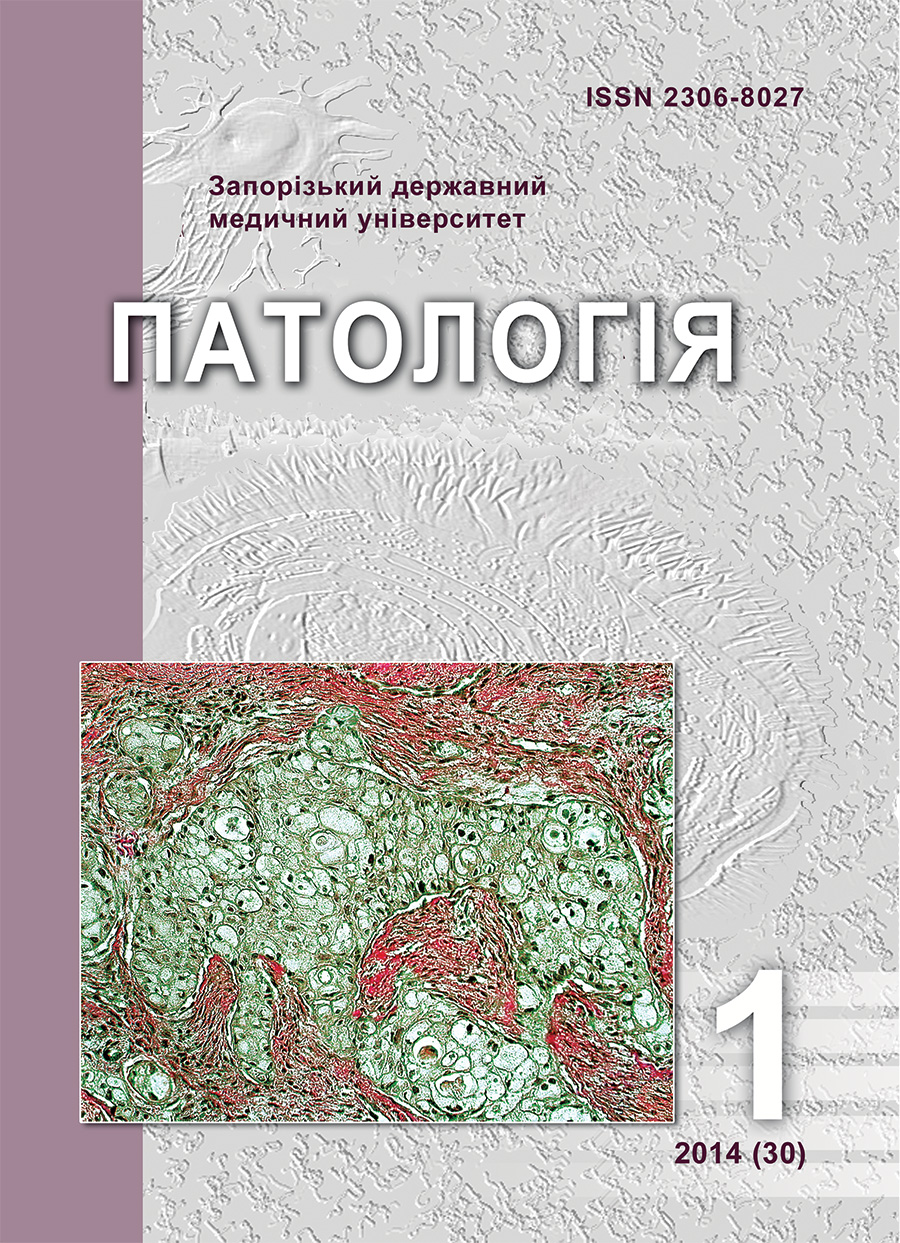MODERN CLINICAL AND LABORATORY FEATURES OF ENTEROVIRAL MENINGITIS
DOI:
https://doi.org/10.14739/2310-1237.2014.1.25161Keywords:
viral meningitis, symptoms, diagnosis, differential diagnosis of meningitisAbstract
Among numerous viral meningitises from 80% to 90% of cases are accounted for meningitis of enteroviral etiology according to the international data. Despite the favorable disease course, there are forms which are characterized by severe damage of CNS. In order to improve diagnostics of enteroviral meningitis in this article we have made a comparative analysis of clinical and laboratory parameters in 23 patients with enteroviral meningitis and 18 patients with serous meningitis of non-enteroviral etiology.
Anamnesis data and the major clinical manifestations of the disease dynamics were analyzed. Particular attention is paid to the comparison of diagnoses, by which patients were sent to infectious hospital, the symptoms that occurred during patients’ admission into hospitals and their severity. The presence and severity of meningeal symptoms and the indices of cerebrospinal fluid in the patients of the comparison group were analyzed in detail.
It is shown that enteroviruses are the important factor in the development of meningitis in the children of younger age. The clinical picture of enteroviral meningitis often develops gradually for 2-3 days and includes the typical syndromes: intoxication and meningeal ones. Every third patient with enterovirus infection has diarrhea and catarrhal symptoms, that’s why it is difficult to diagnose meningitis in its early stages, but it allows to assume enteroviral etiology of the disease. The meningitis of enteroviral etiology is characterized by multiple meningeal signs, while the non-enteroviral meningitis is characterized by dissociation with the prevalence of the of Kernig’s and Brudzinski’s symptoms.
The analysis of the laboratory data showed that the enteroviral meningitis is characterized by low (over 50-100 cells) "mixed" pleocytosis (the ratio of lymphocytes and neutrophils is about 1:1).
These data can be used for differential diagnosis between enteroviral meningitis and serous meningitis of non-enteroviral etiology.
References
Sorokina, M.N. & Skripchenko, N.V. (2004). Virusnye entsefality i meningity u detei: rukovodstvo dlya vrachei [Viral encephalitis and meningitis in children: guide for physicians]. Moskva: Meditsyna [in Russia].
El Hiar R. Enteroviral central nervous system infections in children of the region of monastir, Tunisia: diagnosis, laboratory findings of cerebrospinal fluid and clinical manifestations / El Hiar R., Haddad S., Jaïdane H., Hober D., Ben M'hadheb-Gharbi M., Gullberg M., Neji-Guediche M., Lindberg A.M., Gharbi J., Aouni M. // Indian J Virol. – 2012 Dec. - № 23(3). – Р. 294-302.
Papadakis G. Detection and genotyping of enteroviruses in cerebrospinal fluid in patients in Victoria, Australia, 2007-2013 / Papadakis G., Chibo D., Druce J., Catton M., Birch C. // J Med Virol. 2014 Jan 29. doi: 10.1002/jmv.23885. [Epub ahead of print].
Marri, D. (2006). Infektsionnyye bolezni u detey [Infectious diseases in children ]. Moskva: Praktika [in Russia]
March B. Epidemiology of enteroviral meningoencephalitis in neonates and young infants / March B., Eastwood K., Wright I.M., Tilbrook L., Durrheim D.N. // J Paediatr Child Health. 2013 Dec 23. doi: 10.1111/jpc.12468. [Epub ahead of print].
Shevtsova, N.P., Golubeva, M.V., Pogorelova, L.V., Masiians, V.G. (2002). Osobennosti enterovirusnykh meningitov u detei [Particulari enterovirus meningitis in children]. Aktual’nyye voprosy infektsionnoi patologii u detey . Materialy kongressa [Topical issues of infectious diseases in children. Material congress]. Moskva, 213 [in Russia].
Uchaykin, G.F., Protasenya, I.I., Reznik, V.I. Enterovirusnyi meningit u detey Chabarovska v kontse XX stoletiya [Enterovirus meningitis in children Khabarovsk in the late XX centery]. Epidemiologiya I infektsionnyye bolezni [Epidemiology and infectious diseases]№ 2, 42-46.
Korhenevich A.V. The clinic-laboratory characteristics of children enterovirus meningitis/ E.V. Michaylova, I.G. Eremeeva, A.V. Korzhenovich// 4th World Congress of the World Society for Pediatric Infectius Diseases (WSPID). – Warsaw. Poland, 2005. – P. 106.
Shchukina, A.P. & Kosintseva, U.P (2006). Klinico-immunologicheskaia characteristica serosnych meningitov enterovirusnoi etiologii [Clinical and immunological characteristics serous meningitis enterovirus etiology]. Vestnik Rossiiskogo gosudarstvennogo meditsinskogo universiteta – Herald of Russian State Medical University, T.2 , 312.
Nakaz MOZ Ukrainy № 354 vid 09.07.2004[Orders MH of Ukraine №354 from 09.07.2004] «Pro zatverdzhennia Protokoliv diagnostyky ta likuvannia infektsiynyh chvorob» [Approval of diagnostic protocols and treatment of infectious diseases].
Downloads
How to Cite
Issue
Section
License
Authors who publish with this journal agree to the following terms:- Authors retain copyright and grant the journal right of first publication with the work simultaneously licensed under a Creative Commons Attribution License that allows others to share the work with an acknowledgement of the work's authorship and initial publication in this journal.

- Authors are able to enter into separate, additional contractual arrangements for the non-exclusive distribution of the journal's published version of the work (e.g., post it to an institutional repository or publish it in a book), with an acknowledgement of its initial publication in this journal.
- Authors are permitted and encouraged to post their work online (e.g., in institutional repositories or on their website) prior to and during the submission process, as it can lead to productive exchanges, as well as earlier and greater citation of published work (SeeThe Effect of Open Access).

